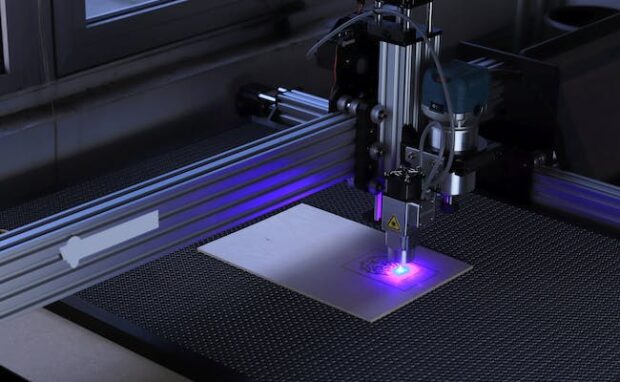Scientists create supercharged lasers
British and South Korean scientists have discovered a way to create laser pulses 1,000 times stronger than existing ones. Computer simulations helped create a new way to compress light to significantly increase its intensity so that it can extract particles from a vacuum. Soon, it could lead to unprecedented breakthroughs in understanding matter.
When they hear about a powerful laser, most may think of a comical doomsday weapon in a Marvel film. However, scientists have been using concentrated beams of light for important scientific research. Learning more about this supercharged beam could help us understand some of the lesser-known scientific advancements that may change our lives.
This article will discuss how the scientists create a supercharged laser. Later, I will cover the other recent laser projects and their purposes.
How will scientists create a supercharged laser?

Researchers from the Ulsan National Institute of Science & Technology (UNIST), the Gwangju Institute of Science and Technology (GIST), and the University of Strathclyde announced a simple method to boost future lasers.
They suggest using the gradient in the density of plasma to cause photons to clump together. The researchers compared it to a group of cars bunching up as they encountered a steep hill.
It could skyrocket laser intensity by more than a million times from what is available if it succeeds. Interesting Engineering says the most powerful lasers in the world have a peak power of approximately ten petawatts.
In contrast, the Earth’s atmosphere receives 173 petawatts of sunshine, roughly a third of the intensity reaches Earth’s surface. “An important and fundamental question is what happens when light intensities exceed levels that are common on Earth,” explained Professor Dino Jaroszynski of the University of Strathclyde’s Department of Physics.
“High-power lasers allow scientists to answer basic questions on the nature of matter and the vacuum and explore what is known as the intensity frontier.”
You may also like: Scientists deflect lasers with air
“Applying terawatt to petawatt lasers to matter has enabled the development of next-generation laser-plasma accelerators, which are thousands of times smaller than conventional accelerators.”“Providing new tools for scientists is transforming the way science is done. We have set up the Scottish Centre for the Application of Plasma-based Accelerator (SCAPA) at the University of Strathclyde to push applications based on high-power lasers forward,” he added.
Professor Min Sip Hur of UNIST explained that “the results of this research are expected to be applicable in various fields, including advanced theoretical physics and astrophysics. It can also be used in laser fusion research to help address the energy issues facing humanity. Our combined Korean and UK teams plan to experimentally test the ideas in the lab.”
What are the other laser projects?

The US Department of Energy has also been testing its supercharged laser. However, the upgraded Linac Coherent Light Source (LCLS-II) uses X-rays instead of photons only.
The first version helped scientists observe plants and algae absorb sunlight and release oxygen. It fired X-rays at them at slightly above absolute zero to slow them down enough for observation.
On the other hand, the LCLS-II has a new electron source and two new undulators that can produce X-rays from the electron beams. The “hard” and “soft” undulators produce low- and high-energy X-rays.
Consequently, researchers can perform experiments with significantly higher precision and the option to probe further. Also, the SLAC website said the X-ray laser will provide “unprecedented insights into chemical and biological reactions.”
It could lead to “more efficient and effective processes in industries ranging from renewable energy to the production of fertilizer and the mitigation of greenhouse gases.” Also, this will “provide an unprecedented level of detail to inform the development of fields such as ultrafast computing, sustainable manufacturing, and communications.”
NASA has also been developing its laser project, but it uses these light beams as an innovative communications technology. It has two parts: the ILLUMA-T and the LCRD.
The former is the Integrated LCRD Low Earth Orbit User Modern and Amplifier Terminal (ILLUMA-T). It beams data to the Laser Communications Relay Demonstration (LCRD) to complete an end-to-end system.
You may also like: Chinese military experts create lasers that fire indefinitely
Matt Magsamen, deputy project manager for ILLUMA-T, stated, “Once ILLUMA-T is on the space station, the terminal will send high-resolution data, including pictures and videos, to LCRD at a rate of 1.2 gigabits-per-second.”
“Then, the data will be sent from LCRD to ground stations in Hawaii and California. This demonstration will show how laser communication can benefit missions in low Earth orbit.”
Nowadays, more people are becoming aware of satellite internet due to Elon Musk’s Starlink. Perhaps we’ll be beaming our internet connections with lasers soon!
Conclusion
Researchers from the United Kingdom and South Korea have developed a way to supercharge lasers. As a result, these powerful light beams can blaze a trail to unprecedented scientific discoveries.
Interesting Engineering said it could help physicists explore concepts like extracting particles from a vacuum. Also, Professor Min Sip Hur believes it could aid in improving energy production.
Learn more about this supercharged laser study on the Nature Communications webpage. Also, check out the latest digital tips and trends at Inquirer Tech.